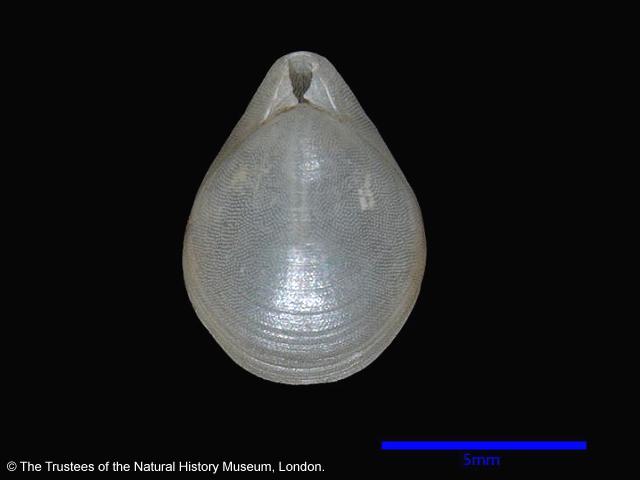
APHOTOMARINE
An educational resource dedicated mainly to the photography
and diversity of marine life that can be found in coastal waters
and intertidal areas of Great Britain and Ireland by David Fenwick.

Glaciarcula spitzbergensis (Davidson, 1852) - A laqueid brachiopod (Brachiopoda images)
Scroll down and rollover titles to change screen image or click on title to view image.
Laqueid brachiopod
Glaciarcula spitzbergensis
- shell exterior 1
Glaciarcula spitzbergensis
- shell exterior 1
Laqueid brachiopod
Glaciarcula spitzbergensis
- shell exterior 2
Laqueid brachiopod
Glaciarcula spitzbergensis
- shell lateral view 1
Laqueid brachiopod
Glaciarcula spitzbergensis
- shell front view 1
Laqueid brachiopod
Glaciarcula spitzbergensis
- shell front view 2
Shell size: Max. length 10 mm.
Depth range: 73-704 m.
Distribution: The Shetlands, Isles of Scilly. Elsewhere the Faeroes, Iceland, Norway, Spitzbergen, arctic Canada and Japan.
Ref. and more info. in:
British Brachiopods (Synopses of the British fauna No. 17) by Howard, C.; Brunton, C. and
Curry, G.B..
Ref: Brachiopoda of the North Sea.
M.J. de Kluijver, S.S. Ingalsuo & R.H. de Bruyne. Marine Species Identification Portal.
Natural History Museum (2014). Dataset: Collection specimens. Natural History Museum Data Portal (data.nhm.ac.uk). https://doi.org/10.5519/0002965
Photographs on this page are
https://creativecommons.org/
licenses/by/4.0/
© The Trustees of the Natural History Museum, London.
The images.are used here to display brachiopods that may be found off the coast of Great Britain and Ireland, and to increase the number of species displays of the phylum on APHOTOMARINE. In time it is hoped more UK material will be obtained and photographed by the author but brachiopods are largely deep water species so are not commonly collected, which is why outsourcing of images is needed for educational purposes and I hereby thank the providers.

The main objective of this website is in furthering environmental awareness and education through the medium of photography. To increase awareness and access to the wildlife of the region and help
people find and identify it. Sometimes the difference between species is obvious but many species can only be determined by observing microscopic characteristics that are specific to any one species.